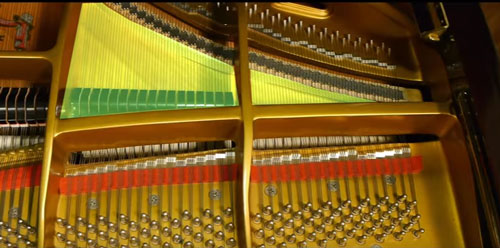The ability to record professional-level music has really grown substantially in the past decade. What you can achieve today with just a simple computer in your home exceeds what you could achieve in a top of the line recording studio just a few decades ago.
As a child I grew up around studio equipment – tape recorders and other seemingly archaic recording technology were all around my home and in my father’s studio. As a young adult, I owned my own commercial recording studio and it was both a formidable investment and came with great compromises. Today, this is no longer an issue – anyone can set up a home studio with a few hundred dollars and a bit of knowledge.
Now before you go out and set up your studio, it’s a good idea to get a grasp on exactly what you will be using it for. Is it just audio recording? Maybe you want to incorporate video – what if you are a composer and you want to print out music you compose? These are all things you should be aware of before making your initial purchases. Planning and budgeting will lead to much better results when everything is in place.
You should also be aware of what operating system and software you intend on using. If you’re going with a Mac you can use Apple Logic or Mark of the Unicorn’s Digital Performer; on PC you have programs like Sonar/Cakewalk, Cubase, Reason and many others. When it comes down to picking the platform and the software, you should investigate what specialty the programs might offer. Most of them do nearly everything, but some of the programs specialize in certain areas better than others. It’s a very good idea to research the available programs thoroughly before making a purchase since some programs can be expensive and the learning curve can be steep.
Music recording in the home has become so advanced that you can literally plug in a MIDI (Musical Instrument Digital Interface) enabled keyboard, play something, and have your program instantly record and transcribe the notes of what you just played! It might not be perfectly accurate transcription – it will assuredly need a little human editing – but it’s a great leap in the ability to transcribe music.
The one aspect of recording that hasn’t changed as much over the years is the recording hardware itself. Microphones, amplifiers, speakers, and room acoustics haven’t changed as much and still remain an important – and potentially expensive area of recording music. Surprisingly, some of the best equipment out there today is older technology. Tube amplifiers, ribbon microphones, and other older technology can still produce amazing – and in a lot of cases better results than newer digital equipment.
The bottom line is, you will need the following equipment to get even a minimal setup going:
microphone(s):
Look for quality here; it makes a huge difference.
Speakers:
You don’t necessarily need anything top-of-the-line here. But since this is your reference they should be relatively neutral rather than flatter any particular frequencies.
Computer:
You can get away with a mid-level PC or Mac.
Recording Interface:
You can use anything you can connect a microphone (or several mics) to a computer with. Make sure it’s compatible with your operating system and computer hardware and that it fits your needs.
Recording Software:
It is very important to research this thoroughly since you will be spending a lot of time familiarizing yourself with this.
MIDI enabled keyboard and printer
Choose a keyboard that suits your playing style. You only need a printer if you want to have score printing capabilities.
This is a very extensive topic and could be covered in-depth for hours upon hours – in fact, they have entire college courses dedicated to this subject. The good news is that anyone looking to set up a studio to record music in their home is able to achieve it with minimal investment in both time and money. You can forgo the audio interface and use the onboard capabilities of your computer if you want. Even Apple’s Garage Band on the iPad has substantial capabilities!
We are living in a wonderful age of technological advancements that enable everyday people to achieve tremendous results with only a minimal amount of investment.
Thanks again for joining me Robert Estrin, Robert@LivingPianos.com (949) 244-3729













